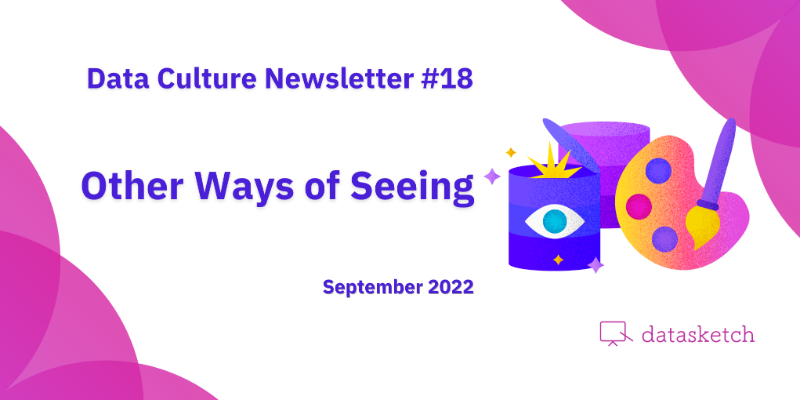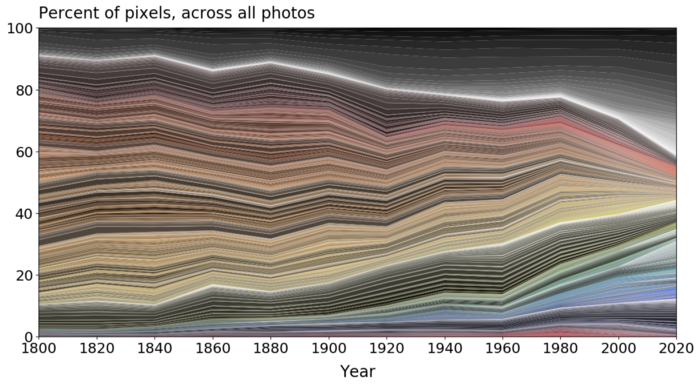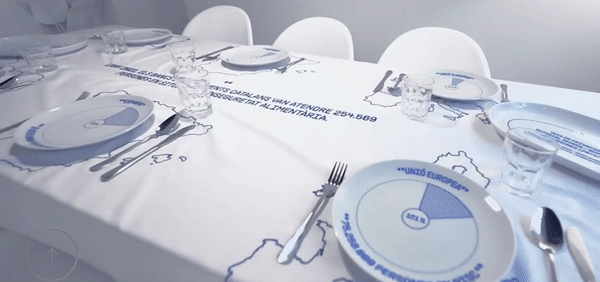Other Ways of Seeing - Data Culture #18
Learn about other ways of seeing things with the colors of objects, the environmental impact of food waste, and the properties of bird feathers.
Available in:

This issue is about the shapes of color, what we don’t consume, and bird feathers. Selected collections and exhibits teach us other ways of looking at things to better understand them.
The shape of color
Shapes and colors are inseparable characteristics of objects. A shape takes on a specific color because of lighting and texture, but also colors correspond to materials, which determine the shape of objects.
The article Colour & Shape shares the photographic analysis of the Science Museum Group: Digital Lab collection. Based on 7,038 photographs of objects, it demonstrates the evolution in the shape, texture and color of objects over time through the change of increasingly artificial materials and the use of minimalist designs.
Thinking in color is a quiz that gives shape and color to the way you think. The test conceives of rigid thinking in terms of black and white and openness to new ideas from across the color spectrum. The same goes for the shape, which changes according to your answers - find out what your score is!

Source: Science Media Group: Digital Lab
Everything you don’t eat
Domestic Data Streamers brings us this exhibition that reflects on the weight of everything we don’t eat. Globally, we throw away a third of the food we prepare. Through analogical interaction with data, the exhibition presents that everything we don’t eat has a strong environmental impact.

Source: Domestic Data Streamers
A catalog of feathers
A group of German scientists and experts decided to open their collections to the community through Featherbase, the world’s most comprehensive online feather library. This is a commitment to knowledge-based bird conservation. Rarely do we have access to information about the plumage of each of these animals, which is unique in its composition, shape, texture, color and function.
🪶 See more
Five things we love
- 🤡 Where memes come from | Know Your Meme. Learn about the evolution of memes, from their mass appearance in 2010 until today, through this compilation of the best publishing platforms.
- 😤 The impacient people (es) | El País. TikTok is no longer just a social network where people dance but a powerful recommendation algorithm. Find out how it has come to this.
- 👩🏻🎤 How artists get paid for streams | The Pudding. This story looks at the music industry. It clarifies how this business works and how artists get paid for music broadcasts.
- 📲 The Best Social Media Datasets | Datarade. Learn how users share, view or interact with content or profiles of different companies and sites with databases and statistics from social networking sites.
- 🤖 New social networking tools help audiences evaluate viral posts and bots | Indiana University. From this set of tools, you’ll be able to identify users, viral posts, and polarization on Twitter.




